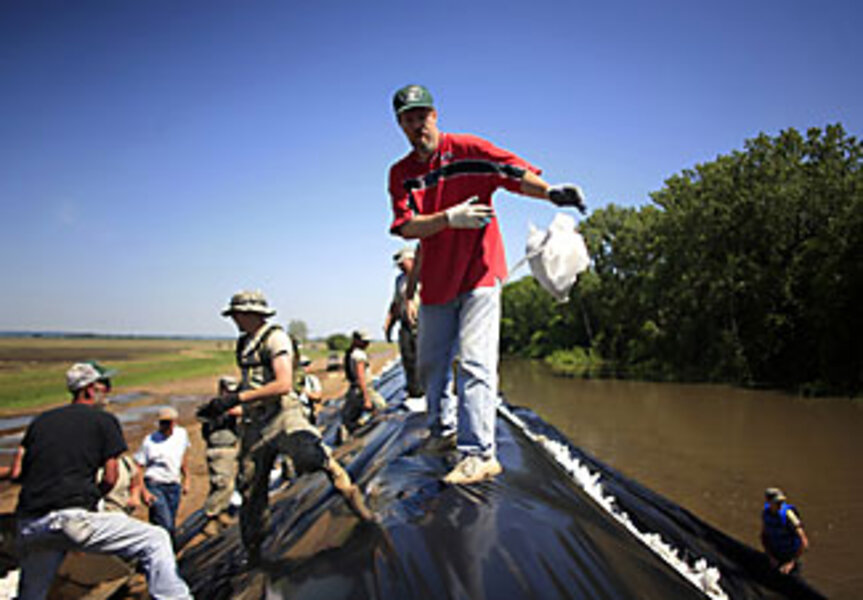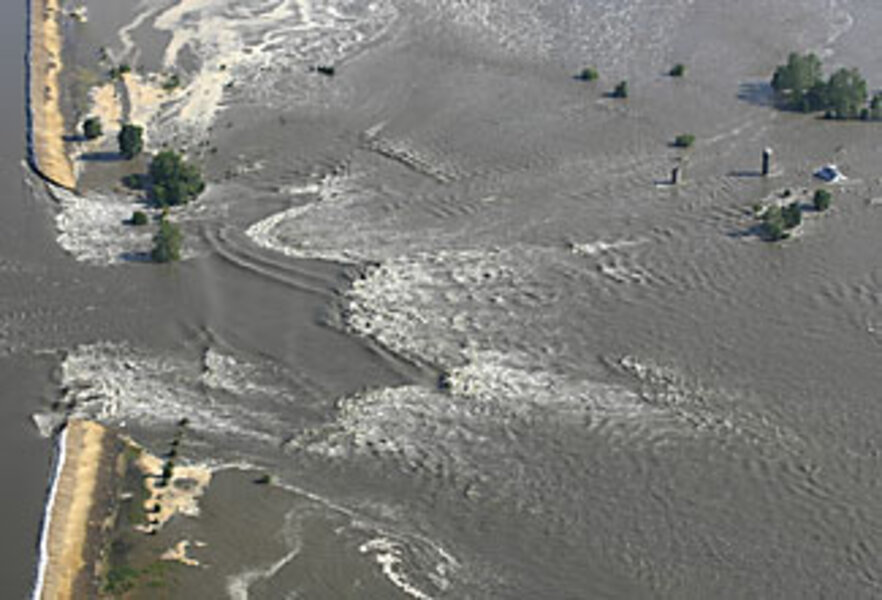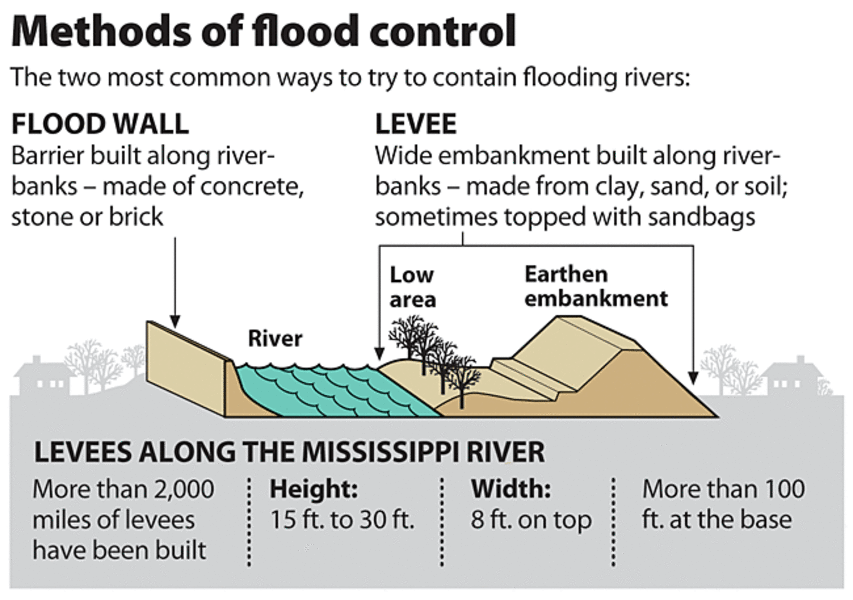Floods engulf archaic levee system
Loading...
| Chicago
The floodwaters, in many cases, have simply been too high.
The sprawling network of levees – built over many years to protect the Upper Mississippi basin from the sort of disastrous flooding that has claimed homes, lives, and millions of acres of farmland this past week – was never designed to withstand the magnitude of a 500-year flood.
And so towns like Gulfport, Ill., and Alexandria, Mo., have watched as waters spilled over the tops of levees that were supposed to keep them dry. [Editor's note: The original version misstated one of the towns referenced.]
The flooding has raised questions about the adequacy of the patchwork system – in which little information is known about where levees exist, who maintains them, and what their condition is – even as towns downstream hurry to fortify their own levees in preparation for the cresting floodwaters still moving south.
"Nature has its way of upping the ante," says Eric Halpin, special assistant for dam safety and levee safety with the US Army Corps of Engineers. "This storm proved that even if we had built levees to the floods of record, they would have been overwhelmed by this event."
So far, at least 20 levees along the Mississippi have overtopped this week, and another 20 to 30 are at risk.
It is too soon, say officials, to determine which ones may have failed before the water spilled over the top and which ones breached due to weakening after the water had overflowed.
Each day brings news of more levees overtopped or breached. Some are smaller agricultural levees built to 30- or 40-year flood standards, while others are higher, designed to protect river towns.
Already, the flood seems likely to equal or exceed the 1993 floods that wreaked havoc in these states, taking 48 lives and causing more than $20 billion in damage. On Thursday, President Bush was expected to tour flooded Iowa counties.
The news of so many levees overtopping or breaching can come as a shock to residents who felt safe behind their walls.
But experts say it's hardly surprising, especially given the low standards to which most levees are built.
To qualify for the National Flood Insurance Program, structures simply need to be behind a levee built to a so-called 100-year standard, meaning there is a 1 percent chance in any given year that a flood will rise above the levee. In the Netherlands, on the other hand, levees for ocean flooding are built to a 10,000-year standard, and inland levees are designed at least to a 250-year standard and usually in excess of 1,250 years.
"Around the world, the 100-year standard is a joke," says John Barry, author of "Rising Tide," his book about the Mississippi River flood of 1927, and a member of a flood control authority that oversees six levee districts in metropolitan New Orleans. "We invest on the cheap."
Numerous things can cause a levee to fail, say experts: The wrong material may have been used, a channel could have been created by a rotting log, or the foundation may fail due to unstable ground. Even putting sandbags atop a levee to increase its height – as dozens of riverside communities are doing this week – can weaken a levee, as people and bags add strain and create weak spots. Once a levee has been overtopped, breaching is fairly common, as the rushing water washes away the backside.
"There will be a lot of repairs required as a result of this," says Gerry Galloway, a retired brigadier general with the US Army and an engineering professor at the University of Maryland, who led a widely acclaimed study of the 1993 floods. "The challenge is to get the levees back before the next flood season."
In the aftermath of the 1993 floods, the Corps repaired 23 miles worth of levee breaks, says Ron Fournier, a spokesperson for the Corp's Rock Island District. But the levees remain pretty much the same. "It's repaired, but it's not a systemic system that manages flood control, it's a patchwork of different systems," he says, noting that significantly improving the system could be costly.
Several lessons and recommendations emerged from the 1993 floods, but few have been acted upon, says Mr. Galloway.
One of the key lessons: that the loose amalgam of federal and non-federal levees wasn't sufficiently monitored or maintained. No one knows how many levees exist or what their condition is, and most are turned over to local communities after being built.
Galloway recommended that the government develop an inventory and inspection system for levees similar to the one it created for dams in the 1970s. Congress finally agreed after Katrina to start such a program, but lawmakers have yet to appropriate sufficient money, Galloway says.
"We also indicated that critical infrastructure" – hospitals, nursing homes, fire and police departments – "was not supposed to be in the flood plain," says Galloway. "But we've continuously ignored that."
One community did decide to move the entire town to higher ground after the 1993 floods. This week, residents of Valmeyer, Ill., are looking down at the raging river from the bluffs they now sit atop, instead of from the plain where their town was largely washed away 15 years ago.
Such an approach is what a some advocates would like to see more of. Any structural system like levees is always going to be inadequate, say some environmentalists and engineers, and it interferes with the river's natural ability to deal with flooding by overflowing into wetlands and floodplains.
"This type of structural work creates a false sense of security for those relying on it to protect them from these waters," says Erich Pica, director of domestic programs for Friends of the Earth, an environmental group that wants federal money used to help move people out of the 100-year flood plain and advocates denying insurance for those who insist on living there.
"We need to face the reality that these floods are going to occur, and maybe the best solution is to move out of the way instead of trying to contain Mother Nature," he says.







